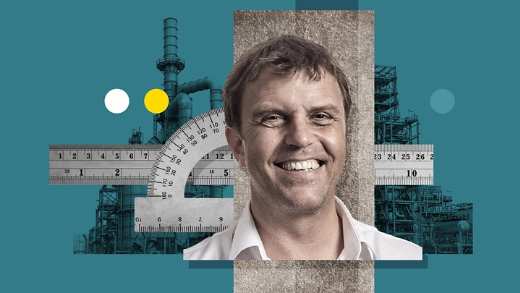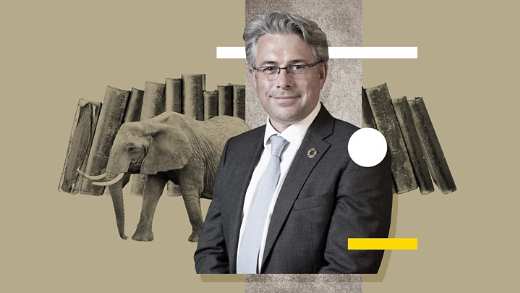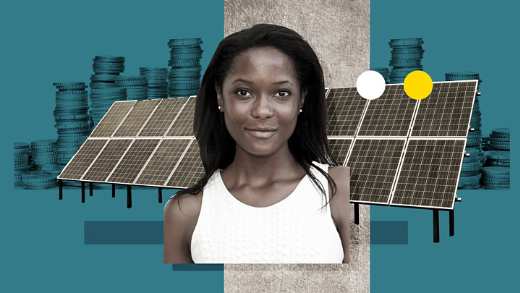Recent thinking
-

MegaTRENDs: Why TRENDs matter for investing in private markets
27 Jun 2025
A set of megatrends is reshaping the world, creating new opportunities and risks for investments in private markets.
-

Slow and steady wins the race: The importance of diversification and dividends in uncertain markets
25 Jun 2025
Global equity income fund manager Richard Saldanha explains why it’s time to be the tortoise, not the hare, when approaching today’s evolving and volatile market.
-

Uncertainty and the correlation conundrum: Why it’s time to look at liquid alternatives in a new light
23 Jun 2025
The current macro environment poses significant challenges for investors. Our AIMS Target Return team explain why a less conventional approach can help maintain portfolio resilience and unlock return opportunities.
-

Decarbonising agriculture: Unlocking investment in sustainable land use
17 Jun 2025
Agriculture is integral to reaching net-zero emissions and reversing nature loss. Its transition also presents huge investment opportunities. We held a roundtable of experts to discuss challenges and solutions.
-

Multi-asset Bitesize: Presidents, policy and markets
16 Jun 2025
Welcome back to Bitesize, our monthly data-viz series, where we unpack market developments in a single chart (or two), giving you sharp insights in under five minutes. This month, we explore what history can tell us about the likely market impact of the US-China tariff dispute.
-

Bond Voyage: A journey into fixed income
9 Jun 2025
In June, our credit teams look under the bonnet of the European industry’s growth engine.
-

Multi-asset Bitesize: Why it pays to stay invested in the market
21 May 2025
Welcome back to Bitesize, a monthly data-viz series in which we unpack market developments in a single chart (or two), giving you sharp insights in under five minutes. This month, we explore the recent gold rush, and the surprising implications of taking money out of the equity market during dips.
-

Bucking the trend: Emerging market debt shows its mettle amid wider market turbulence
19 May 2025
Emerging-market debt has proved a rare bright spot so far this year as investors struggle to assess the impact of US political upheaval. In this article, Carmen Altenkirch and Nafez Zouk advance reasons why the market is well placed to weather ongoing market turbulence.
-

Illiquidity premia in private debt: Q1 2025
16 May 2025
In our latest private markets deep dive, our research team crunches the data to see how evolving macro conditions are reflected in private debt returns.
-

Sovereign engagement: Driving positive change while delivering long-term value
14 May 2025
Investor engagement with governments on their climate commitments can be a powerful complement to other forms of stewardship. It can also help investors identify opportunities and mitigate risks, says Thomas Dillon.
-

From tactical to strategic: How emerging-market hard currency debt fits in your fixed income portfolio
13 May 2025
Investors should consider EMD hard currency for a long-term strategic allocation within fixed-income portfolios to boost portfolio returns, rather than just a short-term tactical play.
-

Bond Voyage: A journey into fixed income
6 May 2025
In May, our EMD team discusses the most effective way to manage fixed income through episodes of heightened uncertainty.
-

Climate Stewardship 2030 programme
29 Apr 2025
Designed to support our holistic stewardship approach, Aviva Investors adopted its Climate Stewardship 2030 programme (CS30) in 2024.
-

Decarbonising power: Challenges and solutions
28 Apr 2025
Decarbonising power is essential to provide affordable, clean energy and deliver net zero ambitions. It also brings significant investment opportunities. We convened a range of industry experts to discuss the barriers and how to overcome them.
-

Multi-asset Bitesize: How multi-asset investing helps weather tariff turbulence
22 Apr 2025
Welcome to Bitesize, our new monthly data-viz series where we unpack market developments in a single chart (or two), giving you sharp insights in under five minutes. This month, we look at the impact of President Trump’s latest tariffs – and how diversification can help investors stay resilient when markets wobble.
-

Future proofing fixed income
16 Apr 2025
Advances in data analytics and AI-driven insights are changing the landscape in fixed income investing, and the pace of change in innovation and technological adoption is remarkable.
House View
No one can predict the future. But our quarterly House View sets out the collective wisdom of our investment teams on the current state of global markets – and where they might be heading.

Equities
-

Slow and steady wins the race: The importance of diversification and dividends in uncertain markets
Global equity income fund manager Richard Saldanha explains why it’s time to be the tortoise, not the hare, when approaching today’s evolving and volatile market.
-

Uncertainty and the correlation conundrum: Why it’s time to look at liquid alternatives in a new light
The current macro environment poses significant challenges for investors. Our AIMS Target Return team explain why a less conventional approach can help maintain portfolio resilience and unlock return opportunities.
-

Decarbonising agriculture: Unlocking investment in sustainable land use
Agriculture is integral to reaching net-zero emissions and reversing nature loss. Its transition also presents huge investment opportunities. We held a roundtable of experts to discuss challenges and solutions.
-

AI and beyond: Opportunities amid tech turbulence
In the second of our global equity sector hub discussions, Josep Bori, technology sector hub lead, explains where the team is finding its strongest investment convictions in artificial intelligence and beyond.
-

2025 voting trends: Four themes to watch
As AGM season gets under way, we look at the key trends that will shape resolutions and lay out our guiding principles for voting.
Fixed income
-

Bond Voyage: A journey into fixed income
In June, our credit teams look under the bonnet of the European industry’s growth engine.
-

Bucking the trend: Emerging market debt shows its mettle amid wider market turbulence
Emerging-market debt has proved a rare bright spot so far this year as investors struggle to assess the impact of US political upheaval. In this article, Carmen Altenkirch and Nafez Zouk advance reasons why the market is well placed to weather ongoing market turbulence.
-

Sovereign engagement: Driving positive change while delivering long-term value
Investor engagement with governments on their climate commitments can be a powerful complement to other forms of stewardship. It can also help investors identify opportunities and mitigate risks, says Thomas Dillon.
-

From tactical to strategic: How emerging-market hard currency debt fits in your fixed income portfolio
Investors should consider EMD hard currency for a long-term strategic allocation within fixed-income portfolios to boost portfolio returns, rather than just a short-term tactical play.
-

Bond Voyage: A journey into fixed income
In May, our EMD team discusses the most effective way to manage fixed income through episodes of heightened uncertainty.
-

Future proofing fixed income
Advances in data analytics and AI-driven insights are changing the landscape in fixed income investing, and the pace of change in innovation and technological adoption is remarkable.
-

Bond Voyage: A journey into fixed income
This month, our fixed income teams discuss the boom in hybrid issuance and weigh up the risks and opportunities of potential tariffs, interest rate moves and fiscal dynamics.
-

Bond Voyage: A journey into fixed income
As we negotiate an uncertain landscape, our fixed income teams reflect on potential sources of resilience.
-

Bond Voyage: A journey into fixed income
With a new US president poised to take office, central banks diverging and ongoing political uncertainty, how are the key fixed income asset classes positioned for the year ahead?
Liquidity
-

Bond Voyage: A journey into fixed income
This month, our fixed income teams discuss the boom in hybrid issuance and weigh up the risks and opportunities of potential tariffs, interest rate moves and fiscal dynamics.
-

Bond Voyage: A journey into fixed income
As we negotiate an uncertain landscape, our fixed income teams reflect on potential sources of resilience.
-

Bond Voyage: A journey into fixed income
With a new US president poised to take office, central banks diverging and ongoing political uncertainty, how are the key fixed income asset classes positioned for the year ahead?
Multi-asset & multi-strategy
-

Uncertainty and the correlation conundrum: Why it’s time to look at liquid alternatives in a new light
The current macro environment poses significant challenges for investors. Our AIMS Target Return team explain why a less conventional approach can help maintain portfolio resilience and unlock return opportunities.
-

Multi-asset Bitesize: Presidents, policy and markets
Welcome back to Bitesize, our monthly data-viz series, where we unpack market developments in a single chart (or two), giving you sharp insights in under five minutes. This month, we explore what history can tell us about the likely market impact of the US-China tariff dispute.
-

Multi-asset Bitesize: Why it pays to stay invested in the market
Welcome back to Bitesize, a monthly data-viz series in which we unpack market developments in a single chart (or two), giving you sharp insights in under five minutes. This month, we explore the recent gold rush, and the surprising implications of taking money out of the equity market during dips.
-

Multi-asset Bitesize: How multi-asset investing helps weather tariff turbulence
Welcome to Bitesize, our new monthly data-viz series where we unpack market developments in a single chart (or two), giving you sharp insights in under five minutes. This month, we look at the impact of President Trump’s latest tariffs – and how diversification can help investors stay resilient when markets wobble.
Private markets
-

MegaTRENDs: Why TRENDs matter for investing in private markets
A set of megatrends is reshaping the world, creating new opportunities and risks for investments in private markets.
-

Illiquidity premia in private debt: Q1 2025
In our latest private markets deep dive, our research team crunches the data to see how evolving macro conditions are reflected in private debt returns.
-

Private debt for DC pensions: The multi-sector opportunity
As the search for better retirement outcomes for the 28 million members of the UK’s defined contribution (DC) pension schemes continues, where are the opportunities for DC investors in private debt and how can they be harnessed?
-

Relative value in private markets: Positive but selective
Using proprietary data, our private markets research team compares risk and return across sectors.
-

Illiquidity premia in private debt: Q4 2024
In our latest private markets deep dive, our research team crunches the data to see how evolving macroeconomic conditions are reflected in private debt returns.
Economic research
-

Decarbonising agriculture: Unlocking investment in sustainable land use
Agriculture is integral to reaching net-zero emissions and reversing nature loss. Its transition also presents huge investment opportunities. We held a roundtable of experts to discuss challenges and solutions.
-

Future proofing fixed income
Advances in data analytics and AI-driven insights are changing the landscape in fixed income investing, and the pace of change in innovation and technological adoption is remarkable.
-

2025 voting trends: Four themes to watch
As AGM season gets under way, we look at the key trends that will shape resolutions and lay out our guiding principles for voting.
-

Transition finance: How the UK can lead as transition finance reshapes investing and economies
As a member of the UK’s newly formed Transition Finance Council, Mark Versey explains why and how a transition finance lens can transform investing.
-

Decarbonising buildings: Five barriers and how to overcome them
The built environment generates almost two-fifths of global emissions, but decarbonising the sector will require a coordinated effort. We brought together experts across the value chain to discuss shared challenges and solutions.
-

Patterns, partnerships and a Marshall Plan for the planet: An interview with Nigel Topping
The UN Climate Change High-Level Champion for the COP26 summit in the UK sets out how the private and public sectors can work together to tackle the climate crisis and other systemic threats. Words by Miles Costello.
-

Ring the changes: An interview with Kate Raworth
The influential academic speaks to AIQ about the flaws in traditional economic thinking and how her revolutionary “Doughnut” offers a fresh approach to solving the world’s greatest problems.
-

Moving mountains and markets: A new way to approach systematic risk
A series of market failures have brutally exposed the shortcomings of Modern Portfolio Theory. However, market participants play an active role in markets; they are not mere bystanders. Understanding this could provide a better way to think about and deal with systematic risk.
-

The levers of change: A systems approach to reconcile finance with planetary boundaries
Financial services underpin all economic activity, which itself depends on Earth’s natural capital. Resolving their interconnected issues to bring about a just transition will require a holistic, systems-thinking approach.
-

A tragedy of perception: Fixing the ESG blind spots in business, finance and economics
A distorted sense of reality has caused us to disregard sustainability concerns when modelling economies, companies and finance. We can no longer ignore such material issues just because they are too hard to fathom. This is where systems thinking comes in, explains Steve Waygood.
-

Redefining stewardship: Why stakeholder capitalism needs to wake up
Asset managers and other financial institutions have a duty to act in the best interests of their customers and society. Macro stewardship will be crucial to meeting these responsibilities, argues Mark Versey.
-

Know your limits: An interview with Nafeez Ahmed
Warnings that natural systems are close to breaking point are not new – but how will we respond? Combining what we know with existing technologies could offer a remarkable opportunity to rethink our world, as Nafeez Ahmed explains.
-

The burning issue: Avoiding ESG fatigue
How can we face existential problems and stay positive? Abigail Herron contemplates simple steps to protect momentum and avoid burnout.
-

Strategies to change the financial system: An interview with Natalie Mangondo
Can society reform the system that has enabled growth but simultaneously brought the long-term health of the planet into question? UN Climate Change High Level Champions Finance Youth Fellow Natalie Mangondo contemplates choices and change with AIQ.
Responsible investment
-

MegaTRENDs: Why TRENDs matter for investing in private markets
A set of megatrends is reshaping the world, creating new opportunities and risks for investments in private markets.
-

Decarbonising agriculture: Unlocking investment in sustainable land use
Agriculture is integral to reaching net-zero emissions and reversing nature loss. Its transition also presents huge investment opportunities. We held a roundtable of experts to discuss challenges and solutions.
-

Sovereign engagement: Driving positive change while delivering long-term value
Investor engagement with governments on their climate commitments can be a powerful complement to other forms of stewardship. It can also help investors identify opportunities and mitigate risks, says Thomas Dillon.
-

Climate Stewardship 2030 programme
Designed to support our holistic stewardship approach, Aviva Investors adopted its Climate Stewardship 2030 programme (CS30) in 2024.
-

Decarbonising power: Challenges and solutions
Decarbonising power is essential to provide affordable, clean energy and deliver net zero ambitions. It also brings significant investment opportunities. We convened a range of industry experts to discuss the barriers and how to overcome them.
-

2025 voting trends: Four themes to watch
As AGM season gets under way, we look at the key trends that will shape resolutions and lay out our guiding principles for voting.
-

Transition finance: How the UK can lead as transition finance reshapes investing and economies
As a member of the UK’s newly formed Transition Finance Council, Mark Versey explains why and how a transition finance lens can transform investing.
-

Decarbonising buildings: Five barriers and how to overcome them
The built environment generates almost two-fifths of global emissions, but decarbonising the sector will require a coordinated effort. We brought together experts across the value chain to discuss shared challenges and solutions.
-

Patterns, partnerships and a Marshall Plan for the planet: An interview with Nigel Topping
The UN Climate Change High-Level Champion for the COP26 summit in the UK sets out how the private and public sectors can work together to tackle the climate crisis and other systemic threats. Words by Miles Costello.
-

Ring the changes: An interview with Kate Raworth
The influential academic speaks to AIQ about the flaws in traditional economic thinking and how her revolutionary “Doughnut” offers a fresh approach to solving the world’s greatest problems.
-

Moving mountains and markets: A new way to approach systematic risk
A series of market failures have brutally exposed the shortcomings of Modern Portfolio Theory. However, market participants play an active role in markets; they are not mere bystanders. Understanding this could provide a better way to think about and deal with systematic risk.
-

The levers of change: A systems approach to reconcile finance with planetary boundaries
Financial services underpin all economic activity, which itself depends on Earth’s natural capital. Resolving their interconnected issues to bring about a just transition will require a holistic, systems-thinking approach.
-

Redefining stewardship: Why stakeholder capitalism needs to wake up
Asset managers and other financial institutions have a duty to act in the best interests of their customers and society. Macro stewardship will be crucial to meeting these responsibilities, argues Mark Versey.
-

Know your limits: An interview with Nafeez Ahmed
Warnings that natural systems are close to breaking point are not new – but how will we respond? Combining what we know with existing technologies could offer a remarkable opportunity to rethink our world, as Nafeez Ahmed explains.
-

The burning issue: Avoiding ESG fatigue
How can we face existential problems and stay positive? Abigail Herron contemplates simple steps to protect momentum and avoid burnout.
-

Strategies to change the financial system: An interview with Natalie Mangondo
Can society reform the system that has enabled growth but simultaneously brought the long-term health of the planet into question? UN Climate Change High Level Champions Finance Youth Fellow Natalie Mangondo contemplates choices and change with AIQ.
Subscribe to AIQ
Receive our insights on the big themes influencing financial markets and the global economy, from interest rates and inflation to technology and environmental change.





































